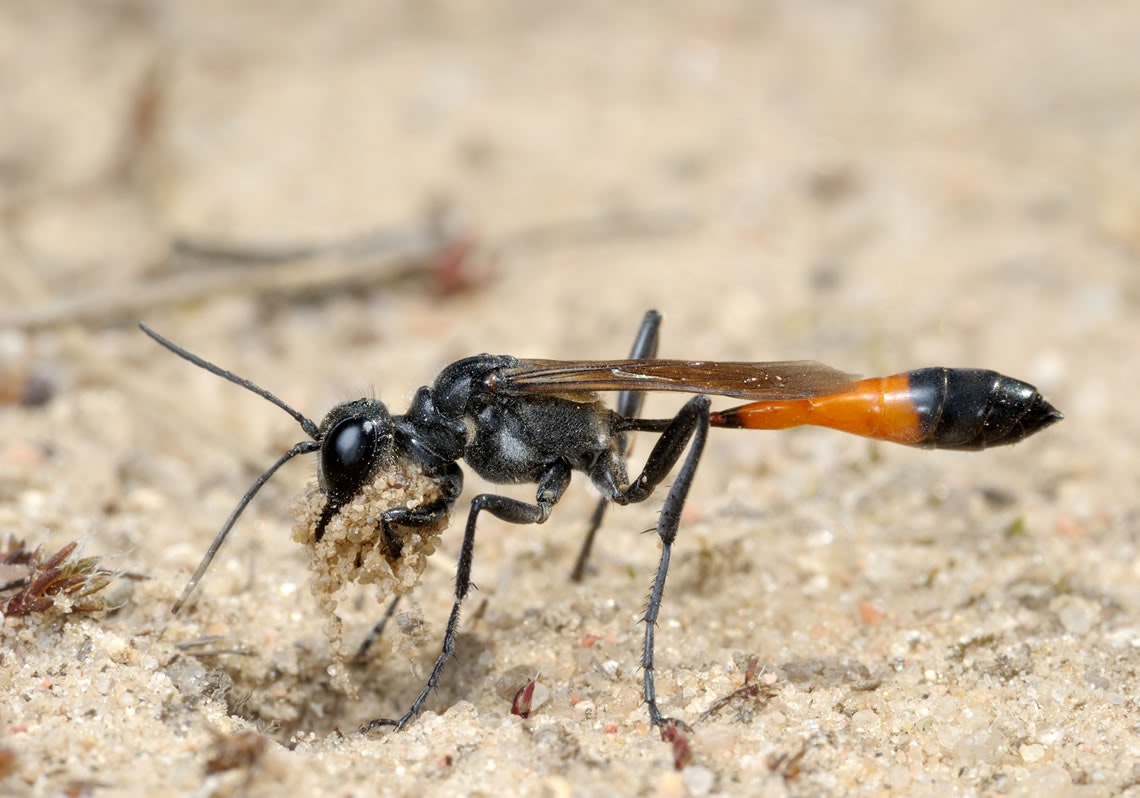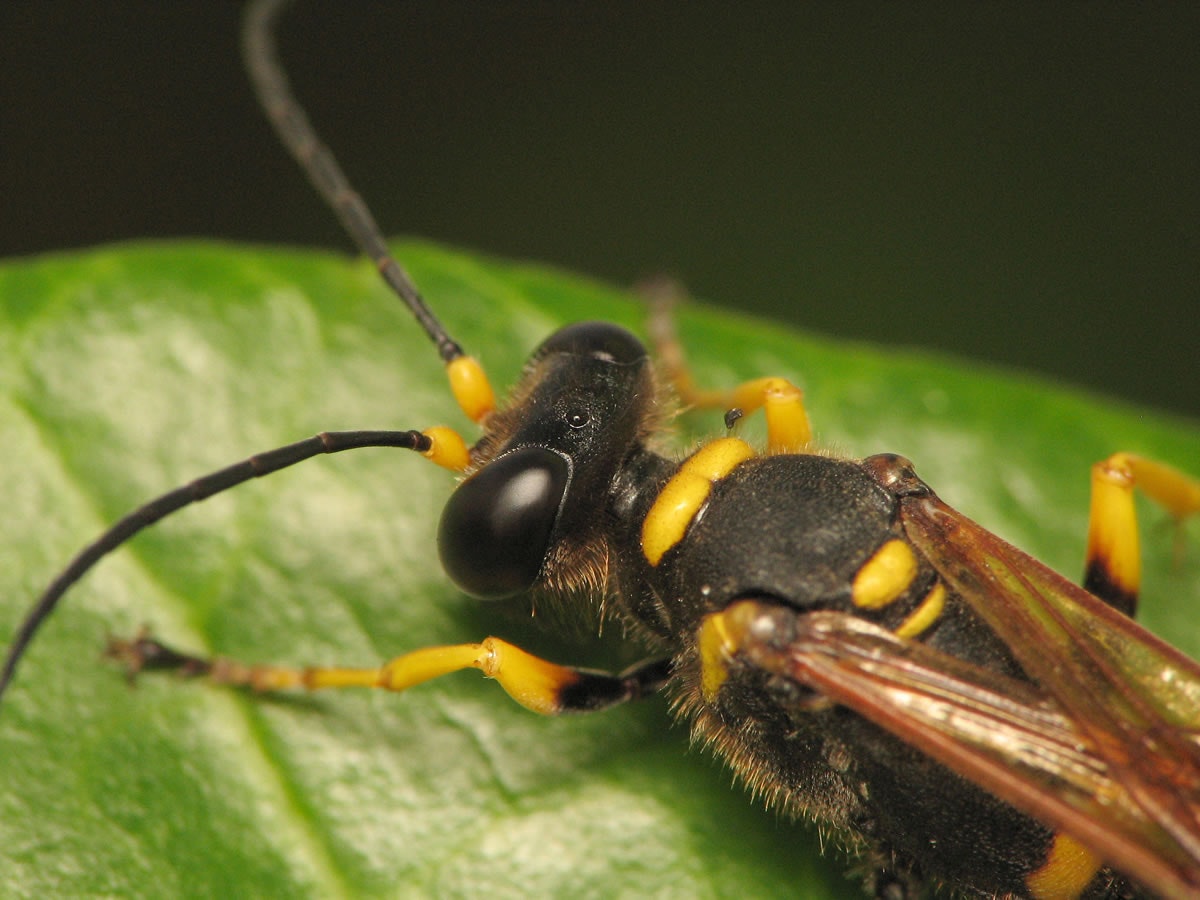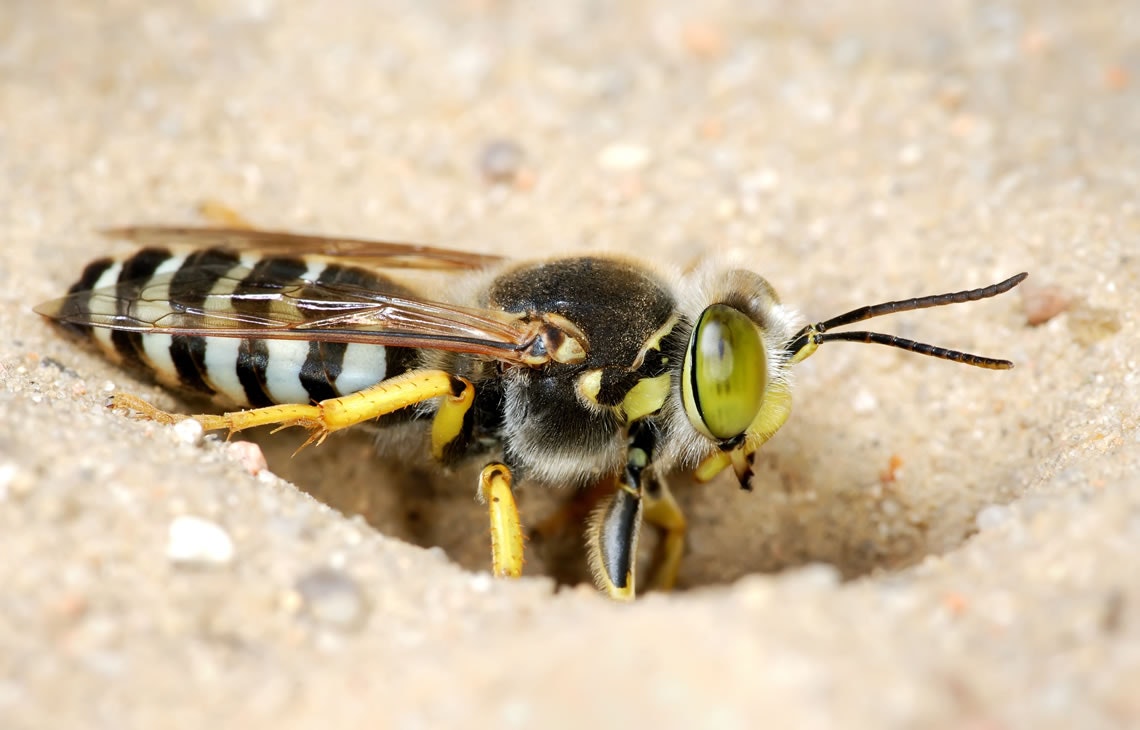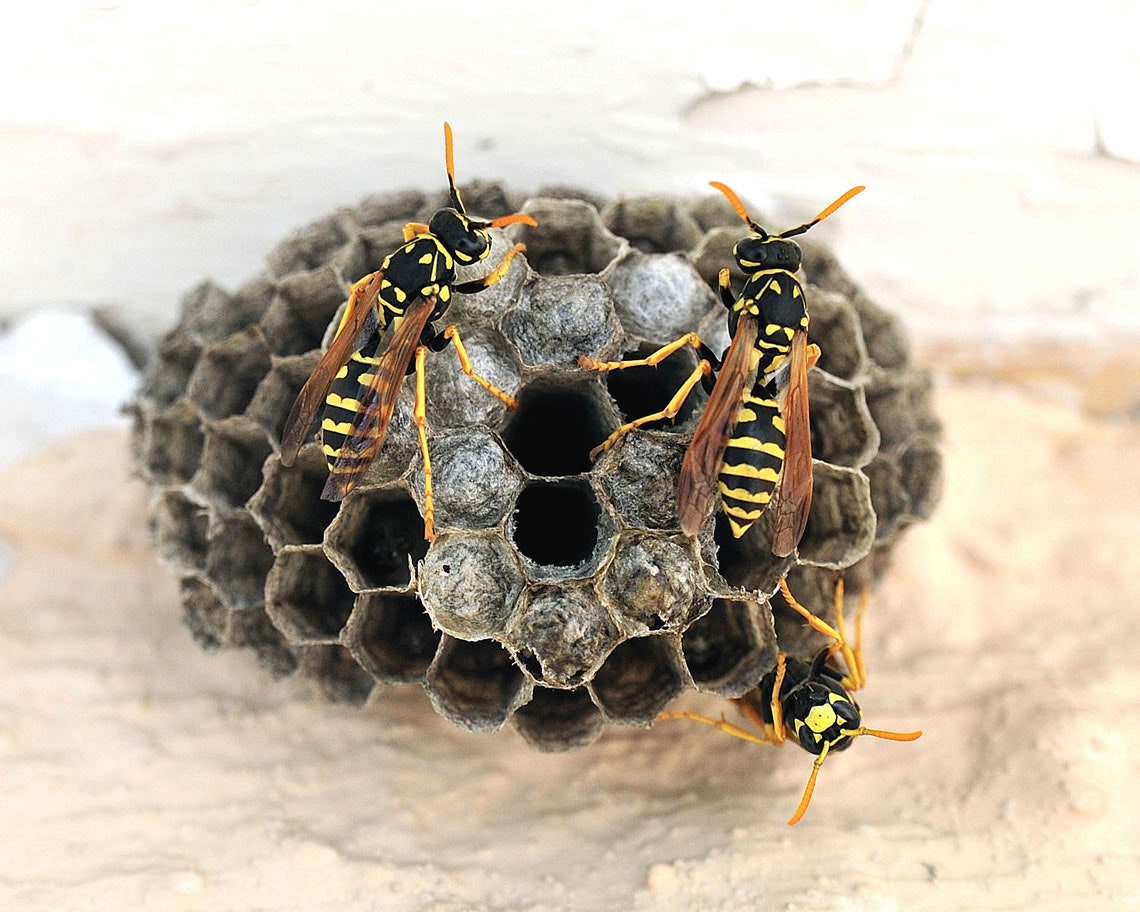Other Wasp Species
Insects found here are sometimes confused for yellowjackets, but aren't controlled by the District.
Blue Mud Wasp (Chalybion californicum)
This wasp is a “poor relative” of the Mud Dauber. The females use vacant mud wasp nests. They hunt on the ground, preying mainly on Black Widow spiders. Adults are metallic blue, blue green, or bluish black.
Cricket Wasp (Chlorion Spp.)
This species harvests crickets from their hiding places and buries them in a simple nest in the ground. The adults are usually slender, metallic bright blue-green or blue with dark violet-tinged wings.
Digger Wasps (Ammophilia Spp.)

These wasps have a wide range of prey. They build simple, one cell vertical burrows and will use a rock to cover the entrance. The adults are very slender, have a long thread-waist, a black thorax marked with silver, and a gray or silvery abdomen with an orange or reddish tip.
Mud Dauber (Sceliphron caementarium)

This is a common wasp. Females build a mud nest of cells laid side by side, usually in a series of two to six, on the sides and eaves of buildings. The adults are mostly black with a yellow waist and legs.
Sand Wasps (Bembix Sp.)

Can usually be found in sandy areas as their name suggests. The females build large tunnels and feed on flies. The adults are stout-bodied; gray or black with pale to bright yellow markings.
Spider Wasps (Pepsis Spp., Priocnemis Spp.)
As their name suggests these species feed on spiders. In California there are approximately 130 species that are mostly small and black or steel blue, with slender long legs and antennae.
Umbrella Wasps (Polistes Spp. and Mischocyttarus flavitarsis)
Umbrella wasps are also commonly referred to as paper wasps. These wasps have been named umbrella wasps because their nests are the shape of an inverted umbrella. They usually have small nests and are usually inhabited by about 250 wasps. Unlike many other wasps and yellowjackets, Umbrella wasps do not have a worker caste. All female wasps are capable of becoming the queen.
Umbrella wasp nests do not have a paper envelope around them and are only a single comb. Umbrella wasps usually hang their nests in eaves, attics, and sheds. Knocking down the nest is a waste of time because the wasps will rebuild it. Therefore, the wasps themselves must be destroyed.
Paper Wasps

Paper Wasps build single layered open celled paper umbrella-like comb nests often inside buildings and are usually not aggressive but can sting if the nest is disturbed.
This group includes the European Paper Wasp (Polistes dominulus), Golden Paper Wasp (Polistes fuscatus) and the Yellow-legged Paper Wasp (Mischocyttarus flavitarsis).
